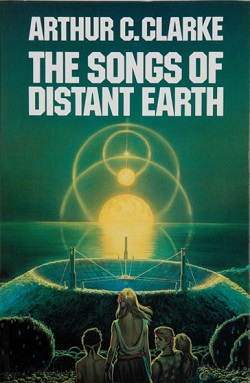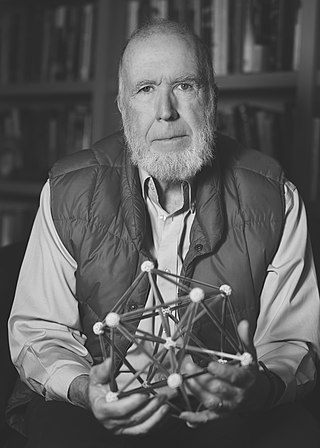
Appropriate technology is a movement encompassing technological choice and application that is small-scale, affordable by its users, labor-intensive, energy-efficient, environmentally sustainable, and locally autonomous. It was originally articulated as intermediate technology by the economist Ernst Friedrich "Fritz" Schumacher in his work Small Is Beautiful. Both Schumacher and many modern-day proponents of appropriate technology also emphasize the technology as people-centered.

The Goddard Space Flight Center (GSFC) is a major NASA space research laboratory located approximately 6.5 miles (10.5 km) northeast of Washington, D.C., in Greenbelt, Maryland, United States. Established on May 1, 1959 as NASA's first space flight center, GSFC employs about 10,000 civil servants and contractors. Named for American rocket propulsion pioneer Robert H. Goddard, it is one of ten major NASA field centers. GSFC is partially within the former Goddard census-designated place; it has a Greenbelt mailing address.

Wes Jackson co-founded the Land Institute with Dana Jackson. He is also a member of the World Future Council.

The Songs of Distant Earth is a 1986 science fiction novel by British writer Arthur C. Clarke, based upon his 1958 short story of the same title. Of all of his novels, Clarke stated that this was his favourite. Prior to the publishing of the novel, Clarke also wrote a short step outline with the same title, published in Omni magazine and anthologised in The Sentinel in 1983.

Kevin Kelly is the founding executive editor of Wired magazine and a former editor and publisher of the Whole Earth Review. He has also been a writer, photographer, conservationist, and student of Asian and digital culture.

Environmental technology (envirotech) is the use of engineering and technological approaches to understand and address issues that affect the environment with the aim of fostering environmental improvement. It involves the application of science and technology in the process of addressing environmental challenges through environmental conservation and the mitigation of human impact to the environment.

The National Oceanography Centre Southampton (NOCS) is a centre for research, teaching, and technology development in Ocean and Earth science. NOCS was created in 1995, jointly between the University of Southampton and the UK Natural Environment Research Council and is located within the port of Southampton at a purpose-built dockside campus with modern facilities. In 2010 the university and NERC components demerged, and the NERC-managed component became the National Oceanography Centre. The two components of NOCS continue close collaboration through the jointly run Graduate School, shared research facilities and laboratories, complementary research groups, and many joint research grants and publications. The university component “Ocean and Earth Science, National Oceanography Centre Southampton” (OES) is part of the Faculty of Environmental and Life Sciences, (FELS). It was ranked 46th in the world for Earth and Marine Sciences by the QS World University Rankings in 2019.

Small Is Beautiful: A Study of Economics As If People Mattered is a collection of essays published in 1973 by German-born British economist E. F. Schumacher. The title "Small Is Beautiful" came from a principle espoused by Schumacher's teacher Leopold Kohr (1909–1994) advancing small, appropriate technologies, policies, and polities as a superior alternative to the mainstream ethos of "bigger is better".

Primary health care (PHC) is a whole-of-society approach to effectively organise and strengthen national health systems to bring services for health and wellbeing closer to communities.
Earth systems engineering and management (ESEM) is a discipline used to analyze, design, engineer and manage complex environmental systems. It entails a wide range of subject areas including anthropology, engineering, environmental science, ethics and philosophy. At its core, ESEM looks to "rationally design and manage coupled human–natural systems in a highly integrated and ethical fashion". ESEM is a newly emerging area of study that has taken root at the University of Virginia, Cornell and other universities throughout the United States, and at the Centre for Earth Systems Engineering Research (CESER) at Newcastle University in the United Kingdom. Founders of the discipline are Braden Allenby and Michael Gorman.
The United Nations Conference on the Human Environment was held in Stockholm, Sweden, during June 5–16, 1972.

The NASA Authorization Act of 2005 is an act of the United States Congress that requires NASA to carry out a balanced set of programs in human spaceflight, in aeronautics research and development and in scientific research. It was signed by the then President George W. Bush and became Public Law 109-155 on December 30, 2005.

A compressed earth block (CEB), also known as a pressed earth block or a compressed soil block, is a building material made primarily from an appropriate mix of fairly dry inorganic subsoil, non-expansive clay, sand, and aggregate. Forming compressed earth blocks requires dampening, mechanically pressing at high pressure, and then drying the resulting material. If the blocks are stabilized with a chemical binder such as Portland cement they are called compressed stabilized earth block (CSEB) or stabilized earth block (SEB). Typically, around 3,000 psi (21 MPa) of pressure is applied in compression, and the original material volume is reduced by about half.

Village Earth: The Consortium for Sustainable Village-Based Development (CSVBD) DBA: Village Earth is a publicly supported 501(c)(3) non-profit, non-governmental organization (NGO) based in Fort Collins, Colorado, US. The organization works for the empowerment of rural and indigenous communities around the world with active projects with the Oglala Lakota on the Pine Ridge Indian Reservation in South Dakota, the Shipibo-Konibo of the Amazon region of Peru, India, Cambodia, and Guatemala. Village Earth is associated with the International Institute for Sustainable Development (IISD) at Colorado State University. Village Earth is also the publisher for The Appropriate Technology Library and The Appropriate Technology Sourcebook, a low-cost rural-development resource initiated by Volunteers in Asia in 1975 but transferred to Village Earth in 1995.
Maurice Lee "Maury" "Quickshot" Albertson, PhD, civil engineer, a teacher of water resources management over a long career at Colorado State University in Fort Collins, Colorado and former head of the Colorado State University Research Foundation.
Jean Gimpel was a French historian and medievalist.

Engineering for Change (E4C) is an online platform and international community of engineers, scientists, non-governmental organizations, local community advocates and other innovators working to solve problems in sustainable global development. Their mission is to 'prepare, educate, and activate the international technical workforce to improve the quality of life of people and the planet.'

Open Source Ecology (OSE) is a network of farmers, engineers, architects and supporters, whose main goal is the eventual manufacturing of the Global Village Construction Set (GVCS). As described by Open Source Ecology "the GVCS is an open technological platform that allows for the easy fabrication of the 50 types of industrial machines that it takes to build a small civilization with modern comforts". Groups in Oberlin, Ohio, Pennsylvania, New York and California are developing blueprints, and building prototypes in order to test them on the Factor e Farm in rural Missouri. 3D-Print.com reports that OSE has been experimenting with RepRap 3-D printers, as suggested by academics for sustainable development.
The Appropriate Technology Collaborative is an American non-profit dedicated to designing everyday technologies for the global poor.

ECHO, Inc #echofightshunger is a non-profit agro-ecological organization whose mission is to support small-scale farmers through the dissemination of information and underutilized plant seeds. The group operates several seed banks worldwide which preserves biodiversity and seed sovereignty. ECHO also offers training courses and workshops on many topics, including tropical agriculture.














